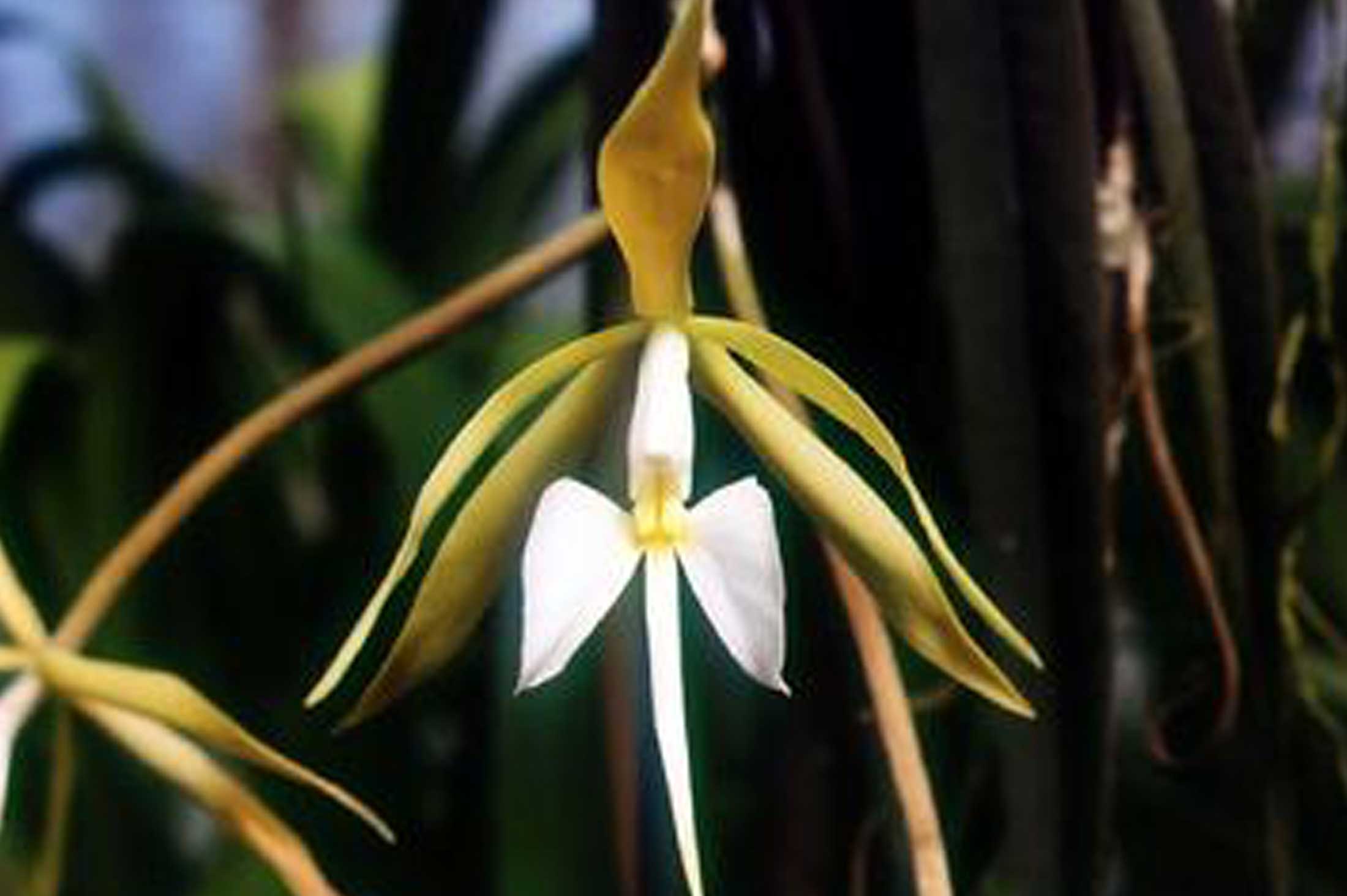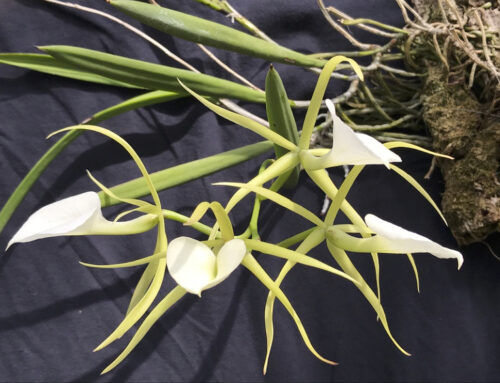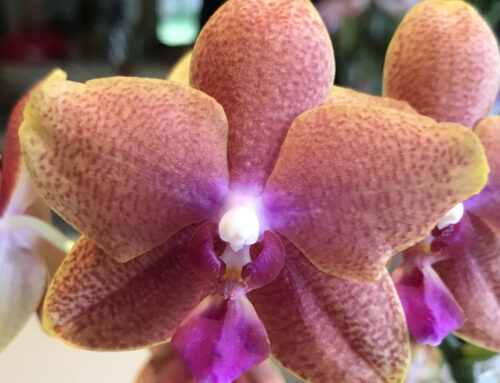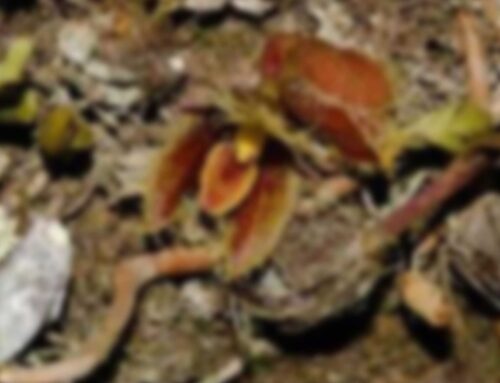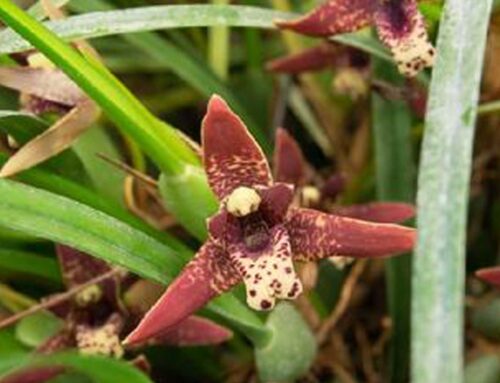Epidendrum Parkinsonianum Hooker Orchid Care
Epidendrum parkinsonianum Hooker is a species from Mexico and Central America is large sized, pendant growing, epiphytic species. They grow pendulously (leaves drooping down about 4 feet) and produce huge flowers that are 5 inches across and 7 inches from top dorsal to bottom petal. In nature, plants bloom mostly in spring and summer, but they may bloom more than once each year. When blooming they are fragrant in the evenings emitting a sweet fragrance.
Temperature: Summer days average 78-80F, nights average 56-57F, and the fluctuation range is 22-23F. Spring, before the start of the rainy season, is the warmest time of year. Days average 82-85F, nights warm from 51 to 56F, and the fluctuation range is 28-31F.
Light: Throughout the year, plants should receive as much light as possible, short of burning the foliage. The leaves may have a purple tinge when light levels are near the maximum the plant can tolerate. (2,000-3,000fc)
Humidity and air movement: In summer and early autumn 70- 75% humidity, dropping to 55-60% humidity in winter and early spring. Humidity is especially important if they are grown mounted.
Water: Late spring to early autumn rainfall is moderate to heavy. This species should be damp, and between the next watering should only slightly dry out. Water should be gradually reduced in autumn after new growths have matured.
Potting medium: Due to the large, hanging and branching habit, it should be fixed on cork, bark or tree ferns. These plants grow well in hanging pots or baskets that have a very good drainage. The division can be done by cutting the rhizomes and planting these pieces, even if they have only one increment, on the boards, with the leaf pointing upwards.
Fertilizers: 1/4-1/2 recommended strength, applied weekly. A high-nitrogen fertilizer is beneficial from spring to midsummer, but a fertilizer high in phosphates should be used in late summer and autumn.
Rest period: During the 5-6 months from late autumn to early spring, you should gradually reduce the amount of water and allow the substrate to dry, but it should not be allowed to have dried soil for a long period of time. To prevent excessive drying, the plants should be sporadically misting between watering. However, for 1-2 months in late winter and early spring, watering should be limited to occasional misting. Watering should be increased when flowers begin to grow. Fertilization should be limited or should be completely abandoned until spring, when stronger watering resumes.

